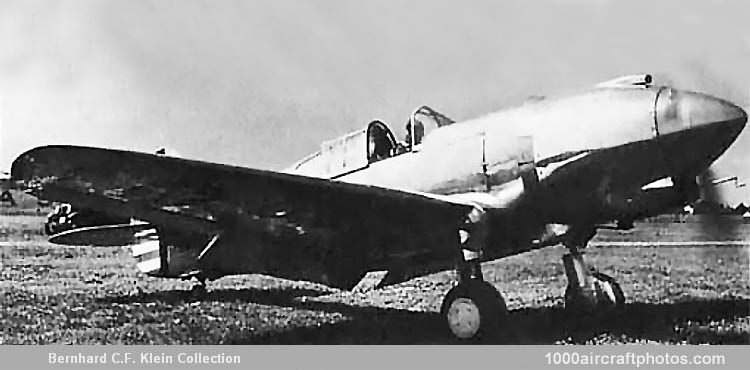01/31/2010. Remarks by Johan Visschedijk: "Evolved in parallel with the XP-40, one further radial engine variant of the P-36 was the Model H75S, derived from the fourth production P-36A. This was an exercise in drag reduction through the use of specialized cowlings about the Pratt & Whitney R-1830-31 Twin Wasp.
The design of the cowlings and engine installation was a project of the Air-Cooled Engine Installation Group stationed at the NACA Langley Laboratory. Beside NACA engineers, associated members to this group were Howard S. Ditch of Curtiss, Peter Torraco of Republic, William S. Richards of the USAAC Wright Division, and James R. Thompson of Pratt & Whitney.
The R-1830-31 had a take off rating of 1,050 hp at 2,550 rpm and a military rating of 1,000 hp at 2,700 rpm at 14,500 ft (4,420 m). The engine had a single-stage blower with an impeller drive ratio of 8.47 to 1 and a propeller reduction gear ratio of 16 to 9.
As originally furnished with the airplane this engine carried an extension shaft which placed the propeller 20 in (0.5 m) ahead of the normal position. The original cowling was designed for this long-nose engine with a large spinner and air for cooling entering a chin inlet below the spinner, the intake for carburetor air was located above the engine.
The XP-42, as the aircraft was redesignated, was first flown on March 5, 1939, after delivery to the USAAC. Although it had no provisions for guns, it participated in the 1939 War Games finished in a washable camouflage. In September 1939 test flights were begun and although as streamlined as an aircraft with a liquid-cooled engine, inadequate cooling, carburetor ducting problems and extension shaft vibration proved troublesome.
The cowling was then redesigned to what was referred to as a short-nose high-inlet-velocity cowling, the extension shaft on the R-1830-31 was removed and cuffs were placed on the propeller roots to increase airflow through the cowling. The propeller, cuffs, and spinner were supplied by the Propeller Division of Curtiss-Wright.
No less than twelve different cowling designs were evaluated, both long and short cowl versions, and also various types of cowl flaps were evaluated, but in the end it was to no avail. The tightly-cowled engine continued to operate at excessive temperatures, a problem not to be solved until Focke-Wulf devised a co-axial fan arrangement on their Fw 190 fighter.
Comparisons were published in a NACA Memorandum Report of April 20, 1943, stating the observed max. speed for the standard P-36A as 313 mph, the XP-42 with long nose 338 mph, the XP-42 with short nose 336 mph and the liquid-cooled P-40C 347 mph. After the trials were discontinued in December 1942, the XP-42 was fitted with a slab-type all-moving tail plane, the aircraft was finally scrapped in January 1947."
